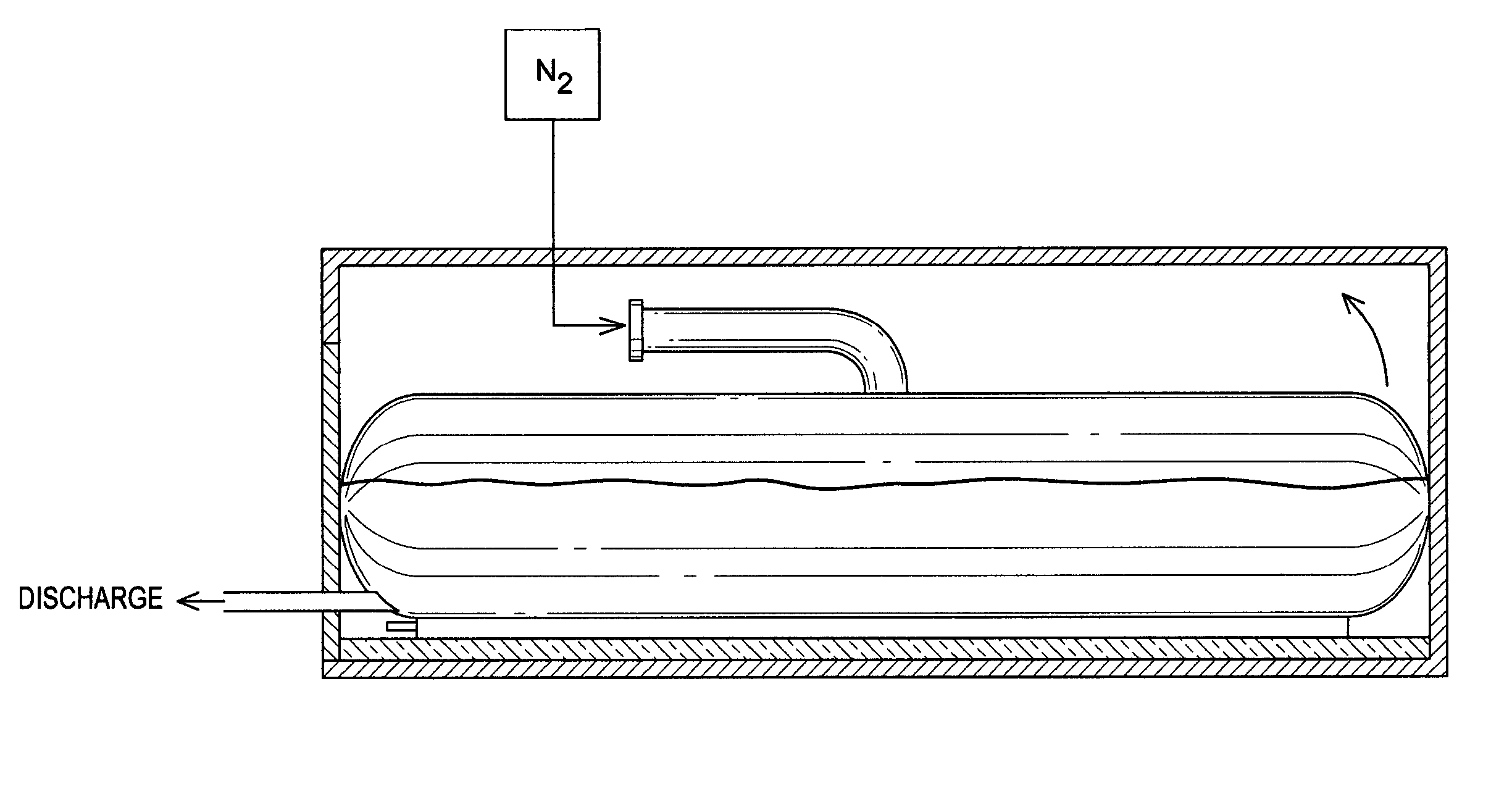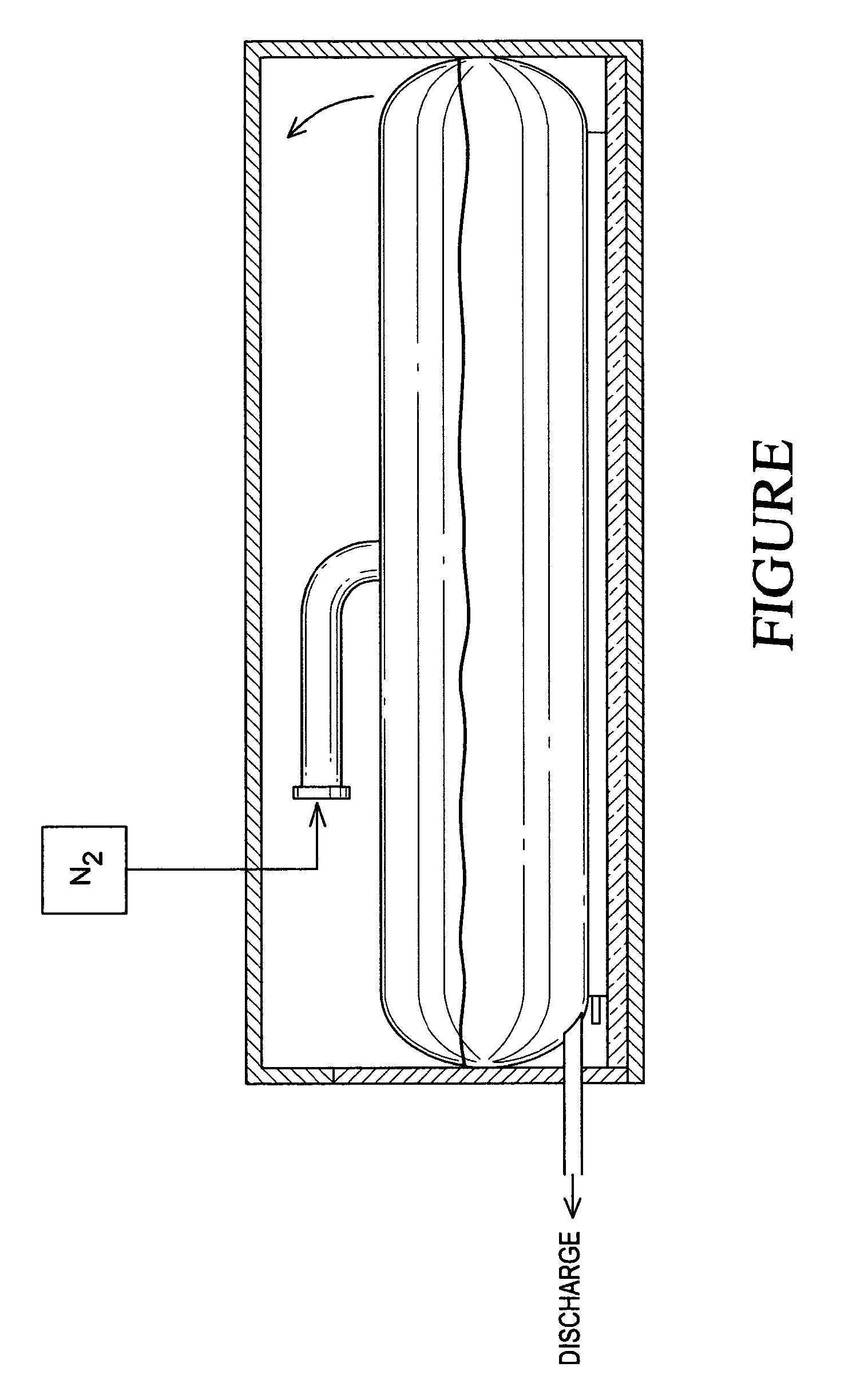Method for transport of heat-sensitive liquids
a technology for heat-sensitive liquids and transportation methods, applied in liquid handling, applications, instruments, etc., can solve the problems of difficult movement or transportation of honey, difficult to receive it into commercial facilities for processing, and high labor costs, so as to minimize heat absorption by the product, avoid mechanical pumping of the product, and minimize the effect of hmf buildup
- Summary
- Abstract
- Description
- Claims
- Application Information
AI Technical Summary
Benefits of technology
Problems solved by technology
Method used
Image
Examples
Embodiment Construction
[0018]In accordance with the invention, there is provided a method for discharging a heat-sensitive viscous liquid such as honey from a hard-sided container. The method is carried out on a hard sided container containing a flexible bladder carrying the liquid, with a heating pad positioned between the bottom of the bladder and the bottom of the hard sided container. An outer wall of the bladder is supported by an inner wall of the hard-sided container. The method comprises energizing the heating pad, pressurizing the upper end of the bladder, and discharging the heat-sensitive viscous liquid from a lower end of the bladder.
[0019]Examples of hard sided containers are bulk shipping containers, which can carry up to 24 metric tons of product, intermediate bulk shipping containers, which carry in the range of 1,000 to 1,500 kilograms of product, and other self-standing containers such as reinforced containers and shipping compartments.
[0020]In a preferred embodiment, the upper end of th...
PUM
 Login to View More
Login to View More Abstract
Description
Claims
Application Information
 Login to View More
Login to View More - R&D
- Intellectual Property
- Life Sciences
- Materials
- Tech Scout
- Unparalleled Data Quality
- Higher Quality Content
- 60% Fewer Hallucinations
Browse by: Latest US Patents, China's latest patents, Technical Efficacy Thesaurus, Application Domain, Technology Topic, Popular Technical Reports.
© 2025 PatSnap. All rights reserved.Legal|Privacy policy|Modern Slavery Act Transparency Statement|Sitemap|About US| Contact US: help@patsnap.com


